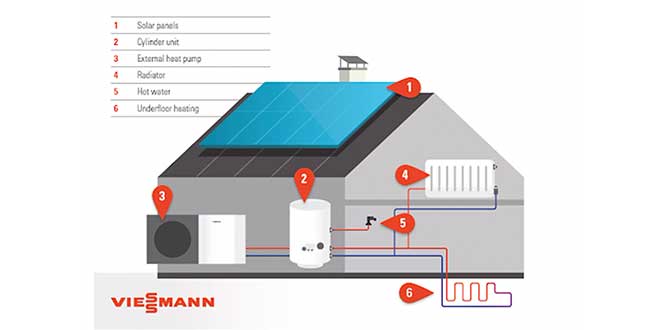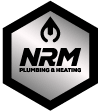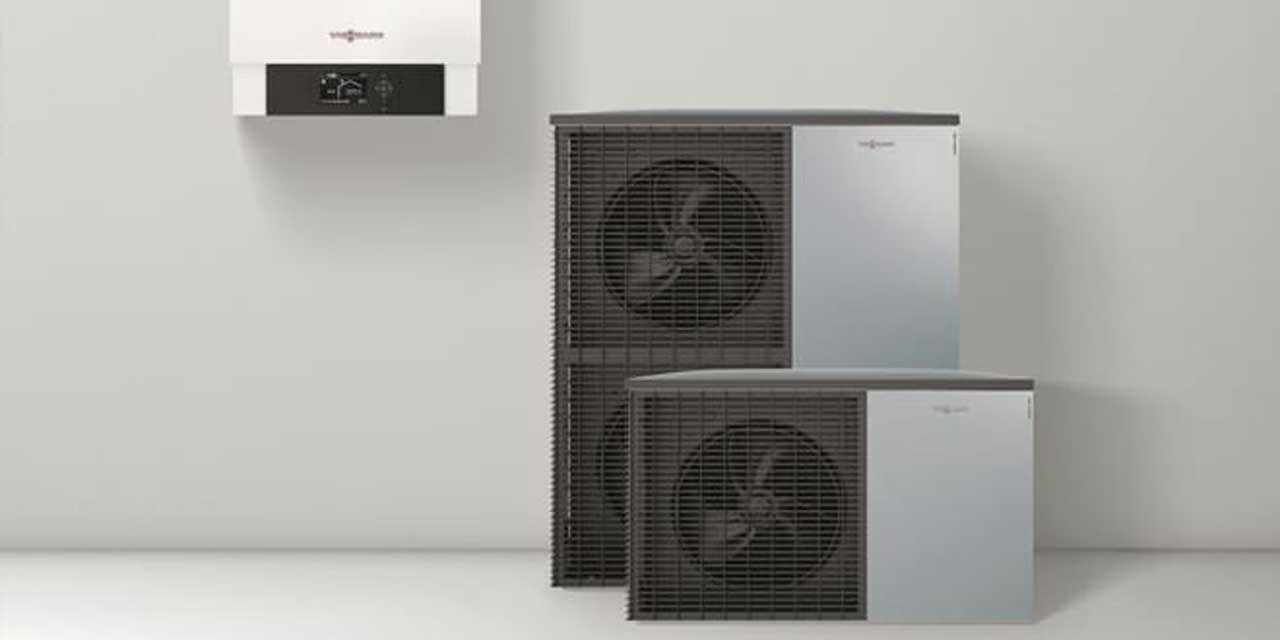Table of Contents
The Heating Revolution at Your Doorstep
The Science Behind Air-to-Water Heat Pumps
Energy Efficiency: Comparing Heat Pumps to Traditional Systems
Technological Advancements in Air-to-Water Heat Pumps
Smart Home Integration and Control
Sizing Your Heat Pump: A Practical Guide
The Installation Process: What to Expect
Maintenance and Longevity: Keeping Your System in Top Shape
Cost Analysis: Initial Investment vs Long-Term Savings
Environmental Impact: Reducing Your Carbon Footprint
Future Trends: What’s Next for Heat Pump Technology?
Making the Smart Choice for Your Home
IMPORTANT: Figures quoted may have changed since this article was first published in Feb 2025
The Heating Revolution at Your Doorstep
As heating engineers with years of experience, we have seen our fair share of heating solutions come and go. But let me tell you, air-to-water heat pumps are a real game changer for Irish homeowners. They are not just another fad, they are a smart, efficient way to heat your home and supply hot water with lower energy costs. What if you could have a heating system that works similar to how a refrigerator works, only instead of keeping the inside of your house cool, it warms the air from outside and uses that heat to heat your home and water? That’s exactly what an air-to-water heat pump does, and it does it with great efficiency. It’s like having a magician in your garden, pulling warmth out of thin air!
The Science Behind Air-to-Water Heat Pumps
Now, I know what you’re thinking – how on earth can you get heat from cold air? Well, it’s all down to some clever science. Air-to-water heat pumps work on a principle similar to your fridge, but in reverse. Here’s a simple breakdown:
- The heat pump extracts heat from the outside air using a refrigerant.
- This refrigerant is then compressed, which raises its temperature.
- The heat is transferred to your home’s water system.
- The cooled refrigerant then returns to start the cycle again.
It’s a bit like squeezing a sponge full of lukewarm water – when you squeeze it, the water that comes out is warmer than it was in the sponge. The heat pump ‘squeezes’ heat out of the air in a similar way. (More info on – Hybrid Heat Pumps)
Energy Efficiency: Comparing Heat Pumps to Traditional Systems
| Heating System | Efficiency Rating (%) | Annual Running Cost (€)* | CO2 Emissions (tonnes)** |
|---|---|---|---|
| Air-to-Water Heat Pump | 300-400% | €500-€700 | 1.5-2 tonnes |
| Gas Boiler | 90-95% | €800-€1,000 | 3-4 tonnes |
| Oil Boiler | 85-90% | €1,000-€1,200 | 4-5.3 tonnes |
| Electric Storage Heaters | 100% | €1,200-€1,500 | 5-6 tonnes |
| * Based on an average output of a 3-bed semi-detached house in Ireland ** Annual emissions for heating and hot water It’s important to note that these figures can vary based on factors such as home size, insulation, usage patterns, and local energy mix |
|||
As you can see, heat pumps have the potential to cut your heating costs by as much as 50% when compared to traditional systems. Not only that, they are easy on the pocket, but they are also easy on the environment.
Technological Advancements in Air-to-Water Heat Pumps
The world of heat pumps is always developing, and new innovations are only making these systems more energy-efficient and reliable. Some of the latest advancements include:
- Improved compressors that can work more efficiently at low temperatures
- Better refrigerants with lower climate impact
- Improved defrosting mechanisms, so as not to freeze up in cold weather
- Variable speed drives that control the output according to requirements for maximum efficiency.
It means modern heat pumps can work efficiently at zero or even below zero Celsius, which makes them suitable for use in Ireland. Therefore, it is important to consider that advanced heat pumps can work efficiently at temperatures as low as −20°C. This is crucial when choosing a heat pump for Irish conditions. (More info on – Air Source Heat Pump Installation)

Image credit: https://www.viessmann.co.uk/
Smart Home Integration and Control
In the modern world, air-to-water heat pumps are also up to speed for smart homes. Many of the current systems are able (capable) to be combined with smart home technology and you will be able to control the heating of your home from your smartphone or tablet. What if you could turn on your heating as you make your way to work, or change the temperature of your hot water from the couch?
Some smart features you might find include:
- Control of apps via smartphone.
- Integration with voice assistants like Alexa or Google Home.
- Learning algorithms that learn from your habits.
- Monitoring and reporting of energy use.
Not only do these smart features add convenience, but they can also assist with the optimisation of energy consumption and result in even greater savings on energy bills.
Sizing Your Heat Pump: A Practical Guide
It is very important to select the correct size heat pump for your house. A small system will not be able to heat your house adequately, while a large system will be costly and inefficient to run. Here is a quick guide to help you understand what factors affect sizing:
- Home size: The general rule is that larger homes require more powerful heat pumps.
- Insulation levels: Homes that are well insulated require less heating power.
- Climate: Heaters in colder climates may require more powerful systems.
- Hot water demand: If you have a large family with high hot water requirements, then you will need a system that can deliver.
Roughly, you might require 5-8 kW for a small house, if it is well insulated, 9-12 kW for a medium size house, and 13-16 kW or more for a larger property. However, these are just estimates – a professional survey is needed for accurate sizing.
The Installation Process: What to Expect
It is not a DIY job to install an air-to-water heat pump, it needs professional expertise. What you can expect from the installation process are the following:
-
- Initial survey: A heating engineer will assess your property and your heating requirements.
- System design: They will design a system especially for your home based on the survey done.
- Preparation: Any work, by other contractors, that may be required to be done before the installation for example upgrading BER rating to avail of SEAI grant. (Full info here)
- Installation: The outdoor unit and indoor components will be installed.
- Connection: The system will be linked up to your existing pipework and electrical systems.
- Testing: The system will go through a series of tests to make sure it is functioning as it should.
- Handover: You will be taken through how to use and care for your new system.
It usually takes 5-7 working days to complete the whole process, this depends on the complexity of the installation. (More info on – Viessmann Heat Pumps)
Maintenance and Longevity: Keeping Your System in Top Shape
One of the advantages of air-to-water heat pumps is their low maintenance. But a little tender loving care can mean a lot to keeping your system efficient for many years. Here’s a simple maintenance checklist:
- Outdoors: Keep the outdoor unit clear of debris and vegetation.
- Regular: Check and clean filters regularly (usually every 6-12 months).
- Annual: Have the system professionally serviced.
- Warning signs: Monitor your energy usage – sudden increases might indicate a problem
Maintained properly, an air-to-water heat pump can keep your home warm for 20-25 years or more. That’s a lotta cosy winters!
Cost Analysis: Initial Investment vs Long-Term Savings
Let’s talk brass tacks. Air-to-water heat pumps have a higher upfront cost than traditional heating systems, but they can lead to significant savings over time. Here’s a rough breakdown (prices quoted are a guide, the price for your specific property will depend on requirements:
- Entry level 8-10 kW air-to-water heat pumps for smaller modern homes – €18,000 to €25,000* parts, installation, fittings (with €6500 SEAI grant back direct to the homeowner after completion)
- Larger 15-20 kW air source systems for outdated 3000+ sq ft houses – €25,000 to €40,000 depending on custom complexity and the size of the house. (with €6500 SEAI grant back direct to the homeowner after completion)
However, don’t let these numbers scare you off. There’s good news:
- SEAI grants of up to €6,500 are available, reducing your initial outlay.
- Annual energy savings can be €500 – €1,000 compared to traditional systems.
- Over a 20-year lifespan, you could save €10,000 – €20,000 on energy bills.
Plus, an air-to-water heat pump can increase your home’s value and improve its BER rating, which could be beneficial if you ever decide to sell.
Environmental Impact: Reducing Your Carbon Footprint
We are all trying to do our part for the environment in the world we live in today. You can cut your carbon footprint considerably with an air-to-water heat pump. We also saw that in our comparison of the efficiency of various heat pumps, they emit far less CO2 than traditional heating systems.
For instance, if you move from an oil boiler to an air-to-water heat pump, you can cut your heating-related CO2 emissions by 2-3 tonnes per year. That’s about 100 trees planted each year, every year! Additionally, as Ireland’s electricity grid continues to add more renewable energy sources, the environmental benefits of heat pumps will continue to improve over time.
Future Trends: What’s Next for Heat Pump Technology?
The world of heat pump technology is evolving. Some of the exciting trends to watch out for are:
- Combining heat pumps with other technologies like solar panels to increase efficiency.
- New refrigerants that are even more environmentally friendly than before.
- Higher temperature output: So that heat pumps can work with traditional radiators without needing modification.
Some form of integration with smart grids: Heat pumps could be used to help even out electricity demand and supply on a national scale.
These advancements are predicted to make heat pumps even more efficient, versatile, and environmentally friendly in the future.
Making the Smart Choice for Your Home
Home heating technology has been transformed with the introduction of air-to-water heat pumps. They have a unique combination of high efficiency, environmental friendliness, and long-term costs savings that are difficult to ignore. Because of the initial cost, they may not be affordable for all homeowners, but the long-term advantages, both economic and ecological, are indeed worthwhile, given the availability of government grants and the probability of increasing energy prices in the future. There is no one-size-fits-all when it comes to homes, what may be perfect for one home may not be ideal for another. That’s why it’s so important to seek a professional’s opinion before making a decision. NRM’s professional heating engineers can visit and have a look at your specific situation and advise you on the best heating solution for your home. Hence, if you are planning to replace your current heating system, then why not go for an air-to-water heat pump? It could be the beginning of a warmer, more efficient and environmentally friendly future for your home.
Ever wondered about water heater replacement? ….Check out our latest blog post for details.





Leave A Comment